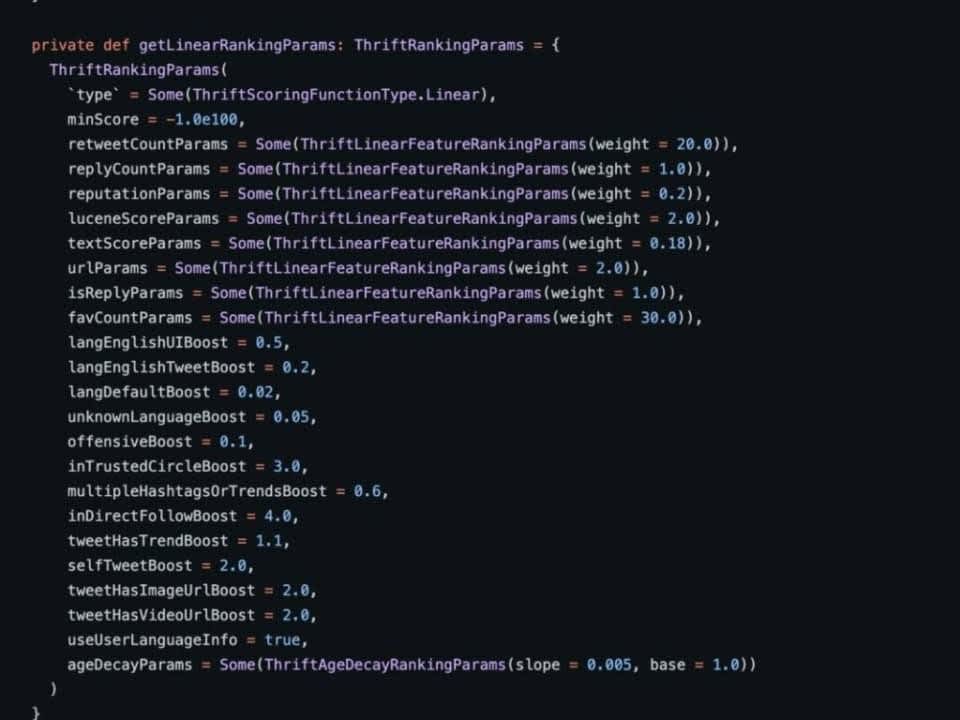News
From Timeline to Feed: A Look at Twitter’s Revealed Algorithm
These are the things you'll need to do (or avoid) to get your tweets seen more.

- April 4, 2023
- Updated: July 2, 2025 at 2:37 AM

A few days ago, it became known that Twitter‘s source code had been leaked on the GitHub platform (most likely by a former employee of the company), and that it had been public for several months. The news came several days after Elon Musk, the CEO of Twitter, announced that he would make public part of the web’s source code, including the algorithm of the “For You” tab.
Now, Twitter has already published this part of the source code in two Github repositories. According to the company, making this part of the source code public is the “first step to be more transparent”, as well as to “avoid risks”, both for users and Twitter itself. Be that as it may, as it is public, some users have already been able to analyze it and extract several interesting facts about the functioning of the algorithm of the For You feed.
User Aakash Gupta has analyzed part of the code, which contains the “boosts” (improvements) of the visibility of tweets depending on several factors. Each condition adds a certain boost to the tweet, giving or taking away visibility depending on various circumstances.
First of all, the type of interactions you receive influences the visibility of your tweets. While likes have a boost of x30 and retweets a boost of x20, replies to tweets only have a boost of x1. On the other hand, the “invisible interactions” of your account also hurt your visibility. If you are muted, blocked, unfollowed, or reported for spam or abuse, your visibility will plummet.

The content of the tweets also has an influence (and a lot): both images and videos have a boost of x2; misinformation and Ukrainian tweets greatly lower your visibility; links are categorized as “spam” by default, unless the user receives many interactions, and invented words and insults have a boost (negative) of x0.01. In other words, if you want to “survive” on the social network, you will have to speak perfectly in your language, not drop any swear words, not post any links or tweet about how much you are worried about the invasion of Ukraine.
Twitter itself also explained that the tweet recommendation process occurs 5 billion times a day, extracting the 1,500 “best tweets” from a pool of hundreds of millions. It further clarified that half of the Feed For You is made up of tweets from people you don’t follow and the other half from people you do follow.
The more information we have about the algorithm, the better brands and content creators will be able to optimize their publications to have more visibility, although this could lead to enhance existing attitudes, such as recycling topics that have already been successful and always talking about the same thing in the same way, avoiding creating new content. Will something good come out of the partial publication of the source code or, on the contrary, will it worsen the Twitter environment even more?
Some of the links added in the article are part of affiliate campaigns and may represent benefits for Softonic.
Publicist and audiovisual producer in love with social networks. I spend more time thinking about which videogames I will play than playing them.
Latest from Pedro Domínguez
You may also like
 News
NewsThe voices of the protagonist from 'Mass Effect' would return immediately if asked
Read more
 News
News'Clair Obscure: Expedition 33' has taken everything… once again
Read more
 News
News'Dragon Ball' shares a world with another of the most famous animes in history, but we didn't know it until now
Read more
 News
NewsThey canceled her favorite series, but Natasha Lyonne is not caught off guard
Read more
 News
NewsDonald Trump wants blood, and demands that CBS fire Stephen Colbert early
Read more
 News
News'Peaky Blinders' releases the first trailer for its movie, with Cillian Murphy back
Read more